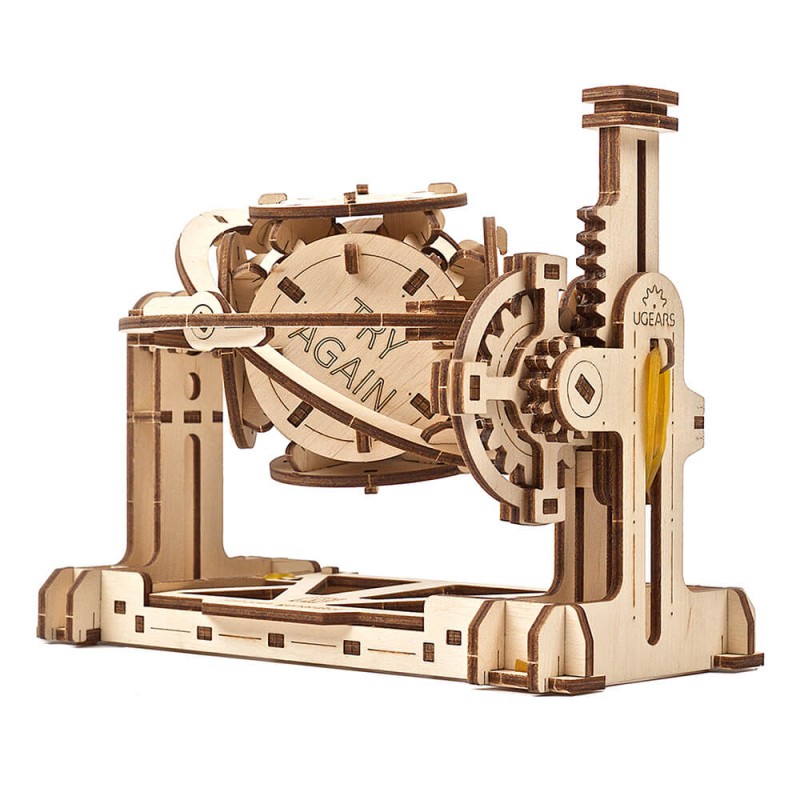















Reference: 70146
Number of components: 160
Level: Easy
Assembly Time: 4 hours
Model Size: 17*12*13 cm
 Attention!
Attention!
Not for children under 14. Contains sharp parts.

Free shipping on orders over €50

30 days for returns
Our Privacy Policy explains our principles when it comes to the collection, processing, and storage of your information. This policy specifically explains how we employ cookies, as well as the options you have to control them.
Cookies are small pieces of data, stored in text files that are stored on your computer or other device when websites are loaded in a browser. They are widely used to "remember" you and your preferences, either for a single visit or for multiple repeat visits
We use cookies for a number of different purposes. Some cookies are necessary for technical reasons; some enable a personalized experience for both visitors and registered users; and some allow the display of advertising from selected third party networks.
Visitors may wish to restrict the use of cookies or completely prevent them from being set. If you disable cookies, please be aware that some of the features of our service may not function correctly
We only collect information about you if we have a reason to do so-for example, to provide our services, to communicate with you, or to make our services better.
We are committed to maintaining the trust and confidence of our website visitors. We do not collect, sell, rent or trade email lists or any data with other companies and businesses. Have a look at our Privacy Policy page to read detail information on when and why we collect your personal information, how we use it, the limited conditions under which we may disclose it to others and how we keep it secure.
We may change Cookies and Privacy policy from time to time. This policy is effective from 24th May 2018.
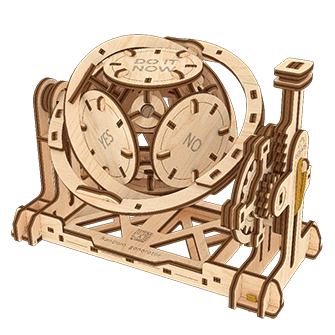
For generations, humanity has been futilely wrestling with perennial questions, such as whose turn is it to take out the rubbish? Who will hoover today? And, of course, who does the dishes?
Those who volunteer to do all these chores have our eternal respect, but what if no one volunteers? The fair way to handle this would be to let chance decide and throw a coin. If you have ever bet on heads or tails, this means you got close and personal with probability theory and its practical application.
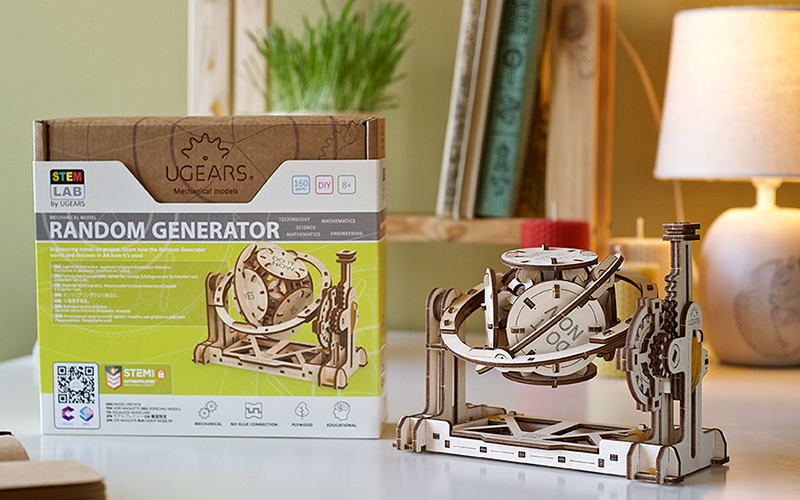
UGEARS Random Generator
Ugears suggests an alternative to the classic coin solution that is not only elegant and fun but has an extra educational benefit. To all questions there is now the answer with Ugears model Random Generator of the STEM lab Collection.
DIY wooden puzzle Random Generator, as you might have guessed from its name, is a device that generates random numbers and provides different random results based on probability theory. How it does this is exactly what the Ugears STEM model will demonstrate.
The main element of the 3D puzzle Random Generator’s design is a cube with an octahedron inside it that in its turn contains a metal ball to provide weight. This construction is powered by a rack-and-gear drive initiated manually and providing energy through a driven gear that rotates a three-axle gear. This is how the cube with all its contents begins to move, which is important for summoning the magic of randomness. Of course, we can only call it magic until we know the science of it. And to learn it, let us take a closer look at the main structure.
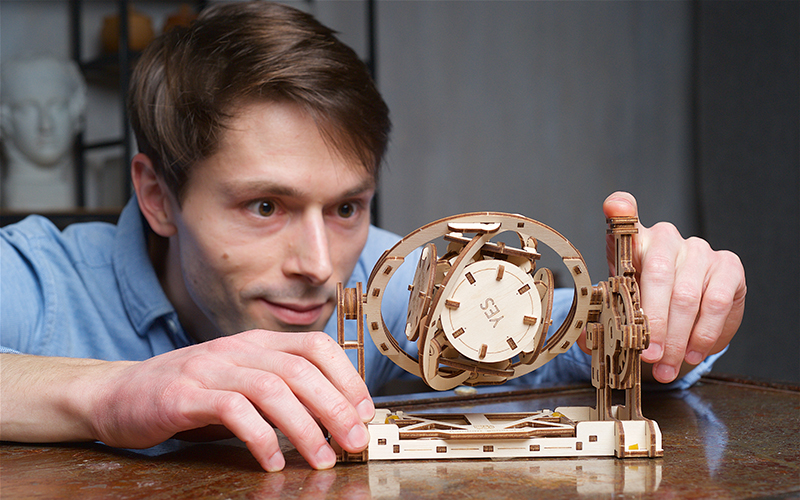
How it works?
The vertices of the octahedron coincide with the sides of the cube. In this way as the energy of the system expires and it stops moving, gravity suspends the metal ball in the lowest part of the octahedron and due to the inclination of the walls it rolls within, it ends up in one of the octahedron’s vertices pulling in down. Whichever of the vertices turns up in the bottom, the side of the cube it is attached to will be right under it and parallel to the floor. In this way, the side of the cube with the answer will be the one facing up on the opposite side.
The probability to get any of the vertices facing down is virtually the same due to symmetry of the octahedron that rotates freely around the axis of its mass. This leads us to a simple conclusion that the probability to receive one of six answers is 1/6 or 0.167.
Every side of the cube positioned by the vertex of the octahedron, has a message: one says “YES”, the other “TRY AGAIN”, etc.
* An octahedron is a regular polyhedron with eight faces (equilateral triangles) and six vertices.

The mechanism of the Random Generator
Ugears STEM puzzles are designed to suit different age groups with a special focus on learning component. The assembly of the model will be interesting and won’t take much time.
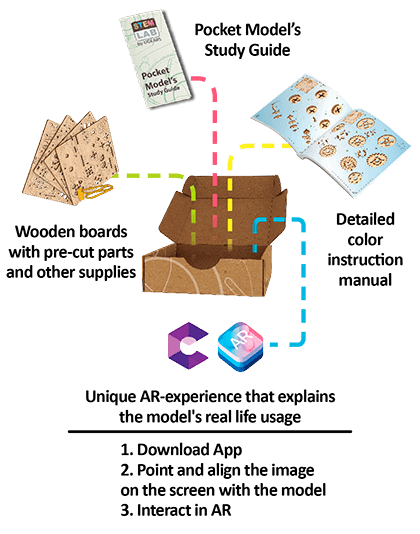
Everything you need for the assembly "UGEARS Random Generator"
Just like the rest of Ugears wooden model kits, putting STEM lab models together is fun and comprehensive: everything you need to build, learn, and discover comes in a box. There you will find:
Data sheet